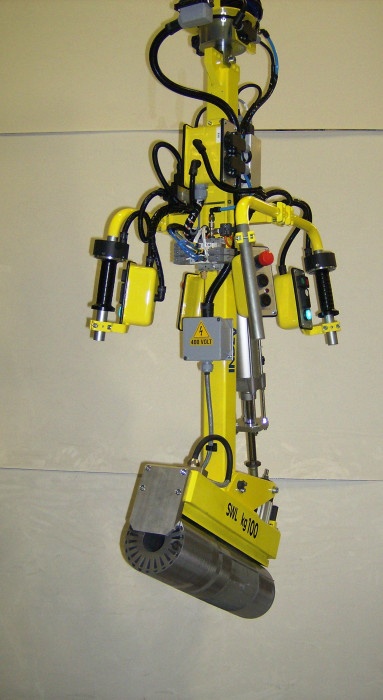The Government’s “Working safely during COVID-19 in factories, plants and warehouses” advice sets out a number of guidelines for employers and employees on how to work safely during the COVID-19 pandemic whilst maintaining social distancing protocols. It requires businesses to maintain 2 metre social distancing wherever possible. However, where these guidelines cannot be followed, businesses should take “all the mitigating actions possible to reduce the risk of transmission…”. These include, but are not limited to:
- Using screens or barriers to separate people
- Using back-to-back or side-to-side working wherever possible
- Review layouts, line set-ups or processes to allow people to work further apart from each other
Manual handling of loads faces its own challenges. Work-related musculoskeletal disorders (WRMSDs) are the most common type of workforce ill-health in the UK. WRMSDs, such as injuries to the back, neck, shoulders and upper limbs, accounted for 6.6 million working days lost in 2017/18.
Risk Assessments
General risk assessment guidelines within the HSE’s “Manual handling at work” state that, “There is no such thing as a completely ‘safe’ manual handling operation”. However, it does set out guideline weights for lifting and lowering loads, which depend on the height and distance from the body that the object is lifted. The maximum weight that can be lifted is shown as being close to the body and between elbow and knuckle height and differs between men and women, as follows:
- Men 25kg
- Women 16kg
Before any manual handling operation is undertaken, a full risk assessment should be undertaken so that all risk of injuries and hazards are identified. Risks may include:
- Loads being held away from the body
- Twisting, stooping or reaching upwards
- Large vertical movement
- Long carrying distances
- Strenuous pushing or pulling
- Repetitive handling
The HSE’s “Manual handling assessment charts (the MAC tool)” advice sets out the levels of risk involved in manual handling tasks, and the weights that can be safely handled. The following weights are those that are considered a low level of risk when there are two or more persons:
- 2 people < 35 kg
- 3 people < 55 kg
- 4 people < 75 kg

Working safely during manual handling tasks with an INDEVA® industrial manipulator
Manual handling in areas such as warehouses, production lines, and assembly lines often means that employees are in close contact with each other, while some lifting and handling operations require two people if the load being handled is over the recommended safe limit.
Scaglia Indeva is a market leader in the design and production of bespoke electronic manipulators which enable a single operator to handle loads of up to 320kg with ease and precision. The INDEVA® manipulator can be equipped with countless types of bespoke lifting and gripping tools which enables a wide range of loads to be handled safely and securely.
The use of an INDEVA® manipulator for lifting and handling of heavy loads and repetitive tasks means that employees are able to safely observe social distancing guidelines whilst providing solutions for the risks identified above.
In addition, independent studies[1] have shown that the INDEVA® industrial manipulator is proven to lower the physical demands of manual handling tasks, which in turn reduces both the number and severity of WRMSDs.
Scaglia INDEVA®, providing you with safe lifting and handling whilst social distancing
For more information on our range of industrial manipulators, or to discuss your current lifting and handling requirements and how we can help you manage your social distancing risk, please call us on 01246 25 23 33, or email us at info@uk-indevagroup.co.uk.
[1] Case study by the Engineering Faculty of Brescia University, published by the International Journal of Industrial Ergonomics. Comparison study carried out by University of Milan.

